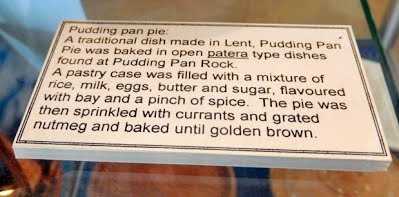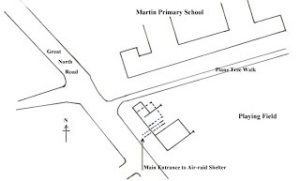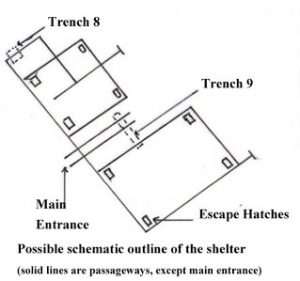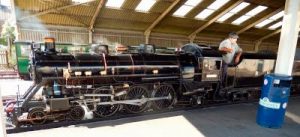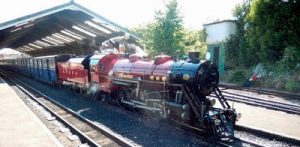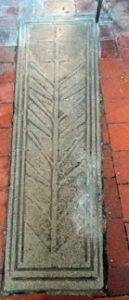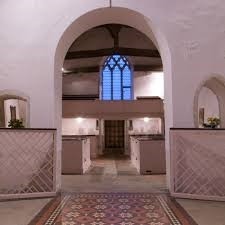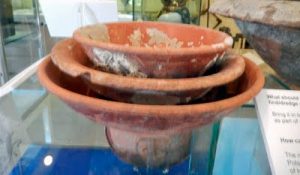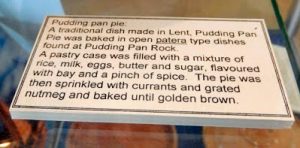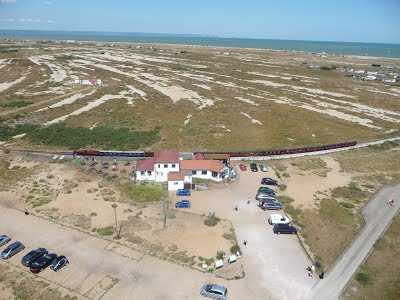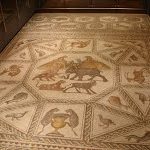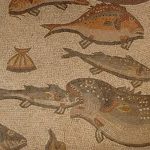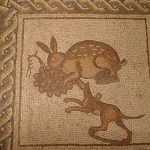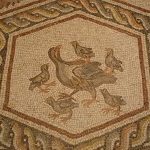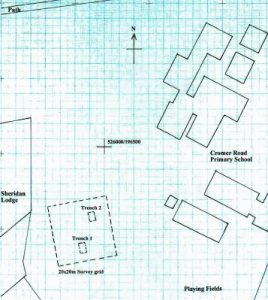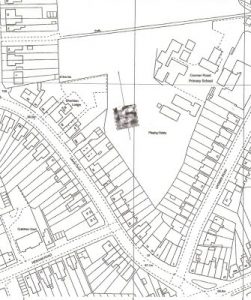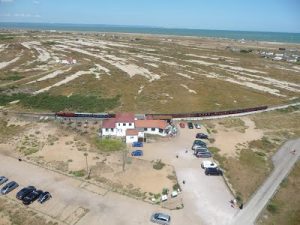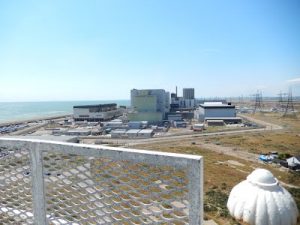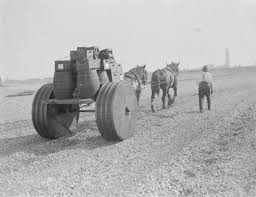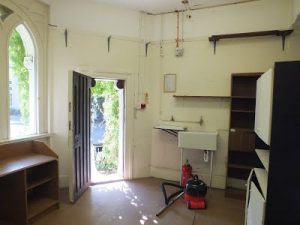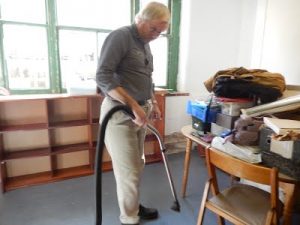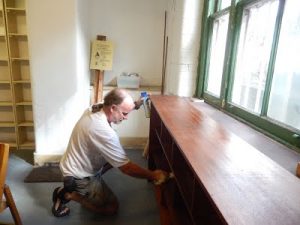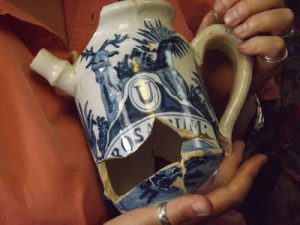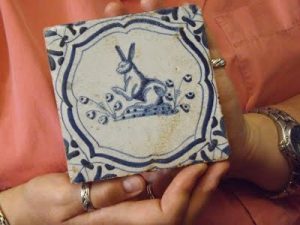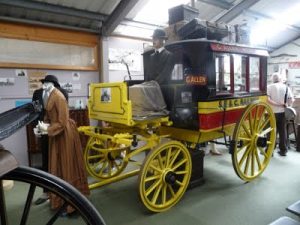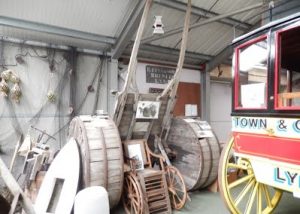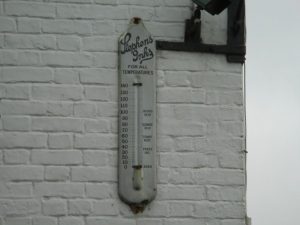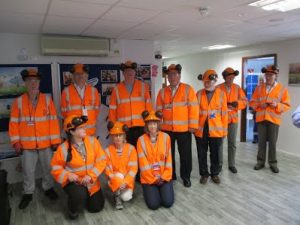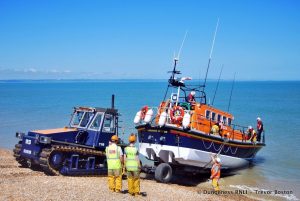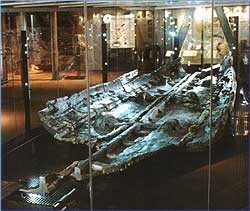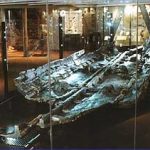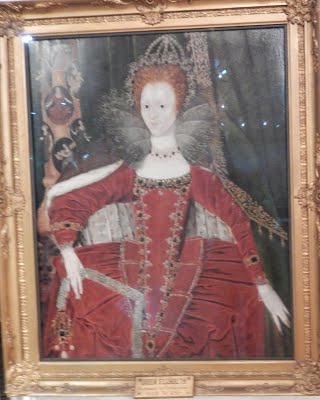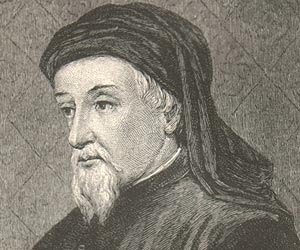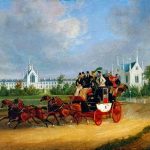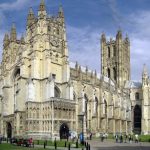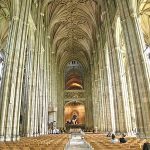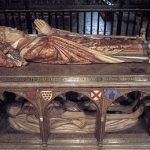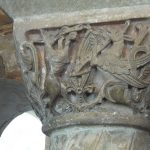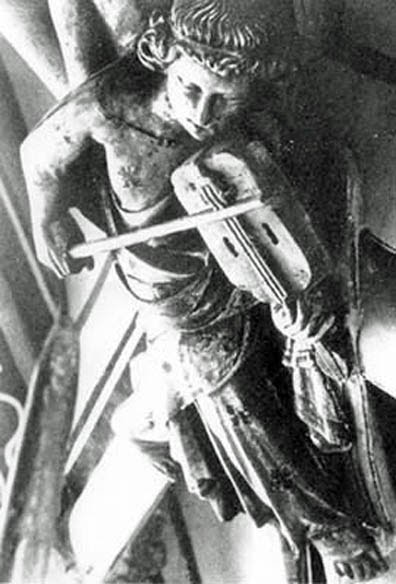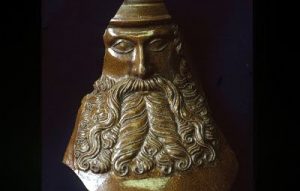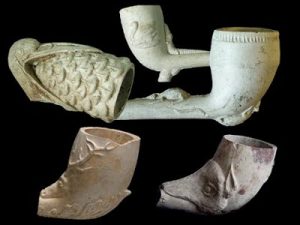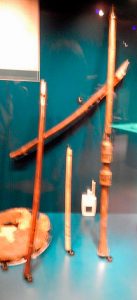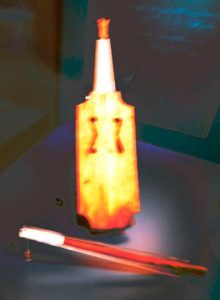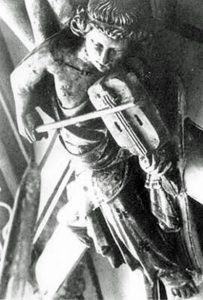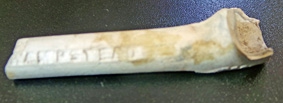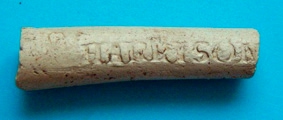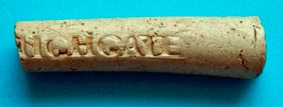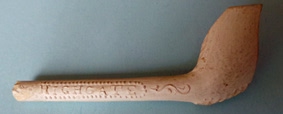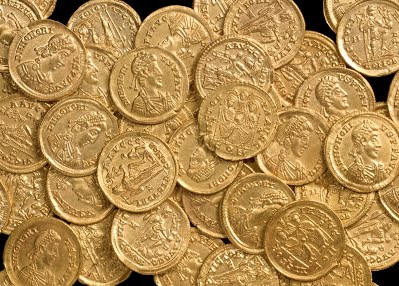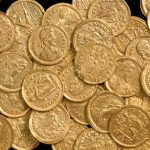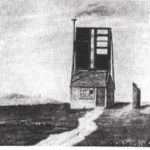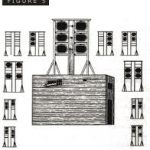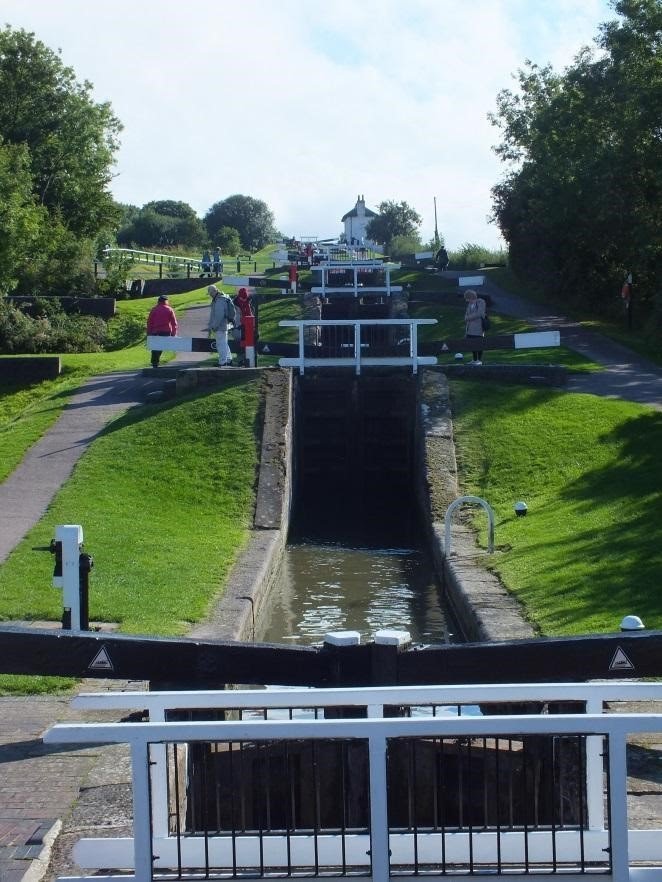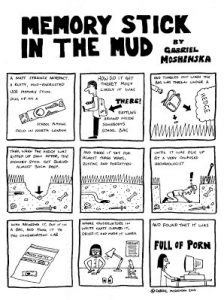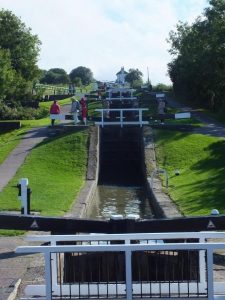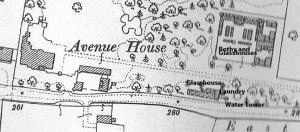Newsletter-515-February-2014
|
Number 515 February 2014 Edited by Andy Simpson HADAS DIARY Lectures are held at Avenue House, 17 East End Road, Finchley, N3 3QE, and start promptly at 8 pm, with coffee/tea and biscuits afterwards. Non-members: £1. Buses 82, 125, 143, 326 & 460 pass nearby and Finchley Central station (Northern Line), is a 5-10 minute walk away.
Tuesday 11th February 2014 Ian Blair – Senior Archaeologist (MOLA) Anglo-Saxon finds at Southend. This covers the investigations at Prittlewell near Southend. An Anglo-Saxon burial was discovered along with a large collection of ornate grave goods. This led the experts to believe they were dealing with a 7th century prince.
Tuesday 11th March 2014 David Thorold – Curator, Prehistory to Medieval. Verulamium Museum; The Sandridge Coin Hoard
Tuesday 8th April 2014 Brian James-Strong, River Lea Tidal Mill Trust; Restoring House Mill (working title)
Tuesday 13th May 2014 Malcolm Stokes (HADAS member); The bishop’s hunting park in Highgate
Tuesday 10th June 2014 ANNUAL GENERAL MEETING
Tuesday 14th October 2014 Dr Nick Ashton – British Museum; Finding Neanderthal tools in Norfolk cliffs
Tuesday 11th November 2014 TO BE CONFIRMED
Jo Nelhams adds; Long outing to Kent, 29 June to 3 July; we need your support to swell the numbers booked to make sure the trip is viable!
Sunday Mornings at Avenue House… Continue in the usual vein for post-excavation work. Our three ‘master sets’ of HADAS Newsletters have been checked over and gaps filled, duplicate books and journals weeded out – as those of you attending the monthly lectures will have noticed – and cleaning and recording of the remarkably varied finds from the 2013 Avenue House greenhouse/water tower excavations are ongoing.
Buxton day 4 – the grand tour Jim Nelhams
One of the objectives we have when planning our trips is to minimize the time spent on the coach. Although the countryside in the Peak District is delightful, we wanted to see as much as we could. This day was a challenge, with a number of visits planned and booked. At Eyam and Bakewell, there were small museums, so our numbers dictated splitting the group and “swapping over”. We also hoped to stop at Arbor Low stone circle on the way back to the hotel – which we managed, though with the weather closing in. But let our correspondents take up the story.
The Cathedral of the Peak Micky Watkins
St John the Baptist at Tideswell is known as the Cathedral of the Peak because it is surprisingly large for a parish church. The church dates from the 14th century and is in the Gothic style, except for the chancel and tower which were built after the Black Death, at the end of the 14th century, and are in the Perpendicular style. The woodwork is a most delightful feature of the church This is one of the few churches which has an original wooden screen, and even a screen door which is beautifully carved. On the organ case there are carvings of birds, leaves and plants and all sorts of animals. On the choir stalls there are carvings of Baptism, Confirmation, Ordination and Visiting the Sick, all about ten inches high. There are further carvings on the pew ends. This beautiful work was done by in the early 20th century by Advent Hunstone, a local carver. There was an earlier church on this site, and the font which appears to be Norman must have been in that church. In the Lady Chapel there is a very old window and a curious tomb with two female stone figures which date from before 1300.
In the De Bower chapel there is a stone monument of a knight and his lady, probably Sir Thurstan de Bower and Lady Margaret. A large tomb in the centre of the chancel is that of Sir Sampson Meverill, a famous knight and soldier who fought Joan of Arc and died in 1462. There are several brasses, one to Bishop Purseglove who was born in Tideswell and became Bishop of Hull. He was an agent of Thomas Cromwell and was involved in the dissolution of the monasteries, becoming rich in the process.
This medieval church was sensitively restored in 1875, and a fine Jesse window was made in the east window behind the altar. In 1907 the vicar paid for a new and very colourful west window. The 19th and 20th century craftsmanship has added to the glory of this big church.
“Ring a Ring of Roses” Kevin McSharry
Eyam (pronounced ‘eem’) is a small village in the heart of the Dales of Derbyshire. Picturesque? Oldy worldy? Yes, to a degree, but probably no more so than many a neighbouring village or hamlet. Yet Eyam is a name with which to conjure; a name that has resonated down the years; and a name that drew the HADAS intrepid explorers on the third day of the 2013 visit to Buxton.
Eyam made its stamp on history and entered into National and International Chronicles during the fateful thirteen months from September 1665 to October 1666 – the fifth and sixth years of the restored Stuart monarchy, in the person of Charles II. Years better remembered in the school history books for the Great Plague and Great Fire of London.
The Great Plague was the fatal portal by which Eyam entered into the history books. The Great Plague, The Black Death, Bubonic Plague by whatever name one wishes to call it meant a painful death for the individual and for the population, as a whole, decimation.
The Plague came to Eyam from London on a wagon carrying a bolt of cloth which was delivered to George Viccars, the village tailor. The cloth was flea infested. It was the flea from the Black Rat (Rattus rattus) which carried the Bubonic Plague. George, the tailor, was the first to be infected. Within two days he was struck down by a raging fever, swellings (buboes) on his body followed by a rose-red rash and finally death. Hence, “Ring a ring of roses A pocket full of posies Atishoo, atishoo We all fall down.” In this simple children’s rhyme, a grim legacy of the plague, the complexities of the plague, its symptoms, how it is spread (a red rash, sneezing), its possible prevention (a nosegay of posies) and its inevitable outcome death (we all fall down) are succinctly summed up.
The plague spread rapidly; and, at this point in the story of Eyam two names figure prominently: the Reverend William Mompesson, village Rector, and the Reverend Thomas Stanley, Mompesson’s immediate predecessor. Under their strong leadership, putting aside their deep doctrinal differences, they persuaded the villagers to enter voluntary quarantine to prevent the plague spreading to neighbouring settlements; to bury their own dead; and to worship in the open air, in the Delph, to limit the spread of the disease. This self-imposed quarantine, this self-sacrifice prevented the spread of the Plague, it saved lives. One hears echoes of the Evangelist John: “Greater love hath no man than this that a man lay down his life for his friends.” John 15:13.
The cost of this self-sacrifice by the villagers of Eyam, was a high one. Painful death after painful death resulting in 260 mortalities, probably a third of the population of Eyam. Some families were wiped out. Some left but a sole survivor such as Elizabeth Hancock who buried her husband and six children in just eight days. Each body Elizabeth dragged or carried from her home, dug the grave and filled it herself
The call to sacrifice came from the clergymen, Mompesson and Stanley, but the response was a communal one – hesitant perhaps but nonetheless a resounding yes! The self-sacrifice of the good people of Eyam was not typical of the rest of society: “If a man does not keep pace with his companions, perhaps it is because he hears a different drummer. Let him step to the music he hears, however measured and far away.” Henry David Thoreau (1817-1862).
Today’s Community of Eyam, the spiritual heirs of the Eyam Community of three and a half centuries ago, have ensured that the heroism and self-sacrifice are remembered, that they are not forgotten. Their sacrifice is kept ever-green through its excellent Museum, its craft centre, which served a welcomed cup of tea, well-maintained Parish Church of St. Lawrence, excellent signage to dwellings and graves of those who lived and perished in the Plague, the provision of car-parking and public toilets; an annual service of Thanksgiving, held at the open-air Delph, their place of worship during the plague, on the last Sunday of August.
The poet Wilfred Scawen Blunt said that there was: “No truce with Time nor Time’s accomplice Death.”
The weathervane on the top of Eyam Museum.
There is no truce with death but Eyam seems to have gained a kind truce with time, because the name of Eyam and the place of Eyam, in history, has not faded. Why is Eyam remembered? Why does its name endure? The answer lies in the eternal verities of love of neighbour and self-sacrifice so poignantly manifested by the good people of Eyam centuries ago. Surely humanity at its best.
Monsal Head Jim Nelhams Having left Eyam on our way to Bakewell, time for a brief coffee (or something stronger) stop at The Monsal Head hotel. The hotel is situated at the top of Monsal Dale, giving a splendid view over the dale, and of the famous railway viaduct built by the Midland Railway in 1867, and the River Wye meandering below. Was that Andy disappearing into the distance? (It was!! With great views from the viaduct, adjacent tunnel, and station remains a short walk away -Ed)
Bakewell Dot Ravenswood
The church of All Saints stands on a steep hill overlooking the town. It may have been founded as early as the 680s, and a church building was almost certainly there by 800. The two crosses in the churchyard, not on their original sites, date from the early 9th century. The fenced-in cross on the west side is particularly well preserved, having its original socket stone and part of its head.
The west front and part of the north and south arcades of the nave are 12th-century work. The main part of the church was rebuilt in the mid-19th century, when an amazing number of Anglo-Saxon and Early English stones was discovered beneath the north and south transepts and the crossing, including decorated cross shafts, grave slabs and standing stones. Many of the grave slabs had symbols inscribed on them, a chalice or sheep shears or a sword, to indicate the occupation of the deceased.
Some of these stones, piled up and cemented together, line the south porch and the northwest arch. What they are doing at Bakewell is a mystery. One theory, based on recent research sponsored by the Heritage Lottery Fund, is that they may relate to Edward the Elder’s reconquest of the northern lands held by the Danes, which was affirmed at a meeting at Bakewell in or about 920. According to the Anglo-Saxon Chronicles, Edward built a fort at Bakewell in that year, and the northern tribes assembled there to acknowledge his authority.
At the top of the south aisle there is an unusual alabaster wall monument commemorating Sir Godfrey Foljambe (d. 1376), and his wife Avena (d. 1382). Their small, waist-length figures are in a recumbent attitude, with hands closed in prayer, but set upright inside a window-like frame. On the right is the “Newark,” an extension of the south transept, so called because it was “new work” in the mid-13th century. It was rebuilt in 1841-52. The screened-off area was a mortuary chapel for the Manners and Vernon families, whose tombs include a spectacular wall monument to Sir George Manners (d. 1623), with two tiers of kneeling children and arches inscribed with verses from the Bible; the alabaster tomb of Sir George Vernon (d. 1567), and his two wives, with effigies; and a wall monument to Sir John Manners (d. 1611), and his wife Dorothy (d. 1584).
It was a surprise to see that the church contains work by several distinguished modern artists and architects. The stained-glass window of the Adoration of the Lamb was designed by the Pre-Raphaelite artist Henry Holiday, and the striking black and gold altar in the north transept is by Ninian Comper. The chancel was redesigned by Gilbert Scott the Younger about 1880. The Old House Museum, behind the church and further up the hill, occupies a building which was described as “a competant dwelling house” in 1534, when it was leased to the tax collector Ralph Gell of Hopton by the Dean and Chapter of Lichfield. In 1777 Sir Richard Arkwright leased it from the Gell family and converted it into six homes for mill-workers. The house was saved from demolition in 1935 by the Bakewell and District Historical Society, who run it as a local history museum, with displays of costumes, lace, toys and tools, and Tudor and Victorian room settings. Much altered and extended, the building is roughly H-shaped, with a two-storey porch and mullioned windows. It has oak beams and floorboards, a two-storey timber partition with some original wattle and daub infill, a garderobe, and big ashlar fireplaces on both floors. The ground-floor fireplace is flanked by the original stair turret (occupied by a modern staircase). (Note – Emma Robinson has conducted further research on the cross and stones at Bakewell – to be included next month.) Arbor Low Stone Circle Jean Lamont
Our visit to Arbor Low was the last we made – at the end of our “3 churches and a Plague” day, before setting off home on Thursday. A gentle ½ mile climb along a farm track brought us to the site 1,230 feet above sea level. We could immediately see why it had been chosen by the Neolithic builders, because of the nearly-360 degree panoramic view of the surrounding countryside.
The site is thought to date from the 3rd millennium BC and to have been developed in at least 3 stages: first a long barrow on the adjacent Gib Hill, then in the late Neolithic an elliptical henge (a 2m high bank with a 7-12 m wide ditch inside) broken by two opposing entrances in the NW and SE. The diameter of the bank is around 90m to 85m externally. Finally a ring of stones was erected on the inner platform: these vary in size around 1.5 – 2m tall, with monoliths 2.6m and 2.9m tall at the entrances. A small group of 7 stones was placed in the centre of the ring. Allowing for broken stones it is estimated that there were originally between 41 and 43 standing stones. The site would have been very impressive, but all the stones have now been flattened, possibly, at the suggestion of English Heritage, for superstitious reasons.
Buxton Museum has a display of artefacts found at or near the site including a skull, discoidal flint knives, flint knives and scrapers, a stone “mace head” and stone axe and some delicate flint arrowheads, all dating from the period 3,200 – 1,400 BC.
Unfortunately the rain which had held off until we reached the site started to come down in a chilly wind, and this discouraged us from exploring and experiencing the site as we would have liked, so we made a hasty retreat to the coach.
As always, prehistoric monuments like Arbor Low raise many questions: what ceremonies took place there? What beliefs did the communities who built it hold, so strong that generation after generation continued their work? It is frustrating that we shall never know.
Site of Cricklewood Locomotive Shed evaluation Bill Bass
During November 2013, Museum of London Archaeology (MoLA) undertook an evaluation dig at this site before a planned housing development is built. The site is bordered by the Edgware Road and the Midland Main Line at the end of what is now Geron Way, south of Staples Corner.
Edgware Road is well known as being the line of Watling Street Roman Road. The steam shed buildings were closed in 1967 and mostly demolished c1969. Eventually a thick concrete raft was laid over the entire site with latterly ‘Parcelforce’ using it as a depot.
A series of large trenches were opened up through the concrete, much of this revealed that most archaeology had been truncated away by various demolition and levelling works. However, the remains of concrete foundations, cast-iron drains and what could be the bottom levels of brick lined ‘inspection pits’ of the loco shed were seen. Inspection pits were used to gain access to the underneath of locos for servicing. At Cricklewood there was a brick built double-roundhouse with a turntable for each, these ‘inspection pits’ may be the ones surrounding the turntables. The above features were directly built into solid London Clay.
Many thanks to MoLA Site Manager Paul Thrale and Project Manager Michael Smith, and also Sandy Kidd of EH for their time.
Some recent Roman finds in Kingsbury by Philip Grant (Wembley History Society)
Back in its early days, in 1953, Wembley History Society campaigned to try to save what was thought to be a Tudor farmhouse at Blackbird Hill in Kingsbury from being demolished. Although there was talk of an archaeological dig, no record appears in the Society’s early Journals to show that any such work was done. Blackbird Farm was demolished around 1955, and “The Blackbirds” public house opened on its site a couple of years later. A sketch of Blackbird Farm in January 1927, Scroll forward to 2010, and the pub had closed like many others, despite an attempt to revive it as the Irish-themed “Blarney Stone”. Developers put in a planning application to build a five-storey block of flats, with an underground car park and retail unit on the ground floor, on the site. Luckily, the location had been identified as one with archaeological potential in a document drawn up in the 1980’s by Brent’s then Planning Conservation Officer, Geoffrey Hewlett, a Wembley History Society member and now a well-known local history author. The Society, backed by Brent Museum, supported the Planning Officer’s recommendation that there should be a condition in the planning consent for a proper archaeological assessment of the site, and this was agreed by the Planning Committee, including a requirement that both the Museum and the Society should be consulted about the archaeology work.
The desk-based archaeology assessment for the site suggested that, although there was a good prospect of finding post-medieval material, the chances of finding anything earlier were low. The information that we provided was that there could well be earlier material, based on the possibility that what is now Blackbird Hill was part of a pre-Roman trackway from a Thames crossing near Westminster up into Hertfordshire (known as Eldestrete, or the old street, in Saxon times), and that the Roman tiles and other domestic material included in the rubble walls of the nearby St Andrew’s Old Church (which dates from around AD1100) may have come from a local building.
A photo taken during our visit on 18 September, with cabins in the background.
In the Summer of 2013, we learned that building work on the site was about to begin, and that Archaeology South-East (“ASE” – the commercial arm of University College London’s archaeology department) would be carrying out the excavations. Preliminary work by ASE had involved three trial trenches at various locations around the pub building, which established that the only area worth full excavation was at the lower end of the site alongside Old Church Lane. This agreed our own ideas, based on the 1950’s building plans. Because the contractors were already on site, excavating for the underground car park, ASE could not allow public access to their “dig”, but did allow a group from Wembley History Society to visit on 18 September 2013, in hard hats and high-visibility jackets and under close supervision.
One of the brick pads Among the first excavated remains we were shown were the brick pads which would have supported the wooden frame of the square timber building (seen in the sketch on page 7) at the corner of the site. This was probably a store for grain or a similar crop, which needed to be raised off of the ground to protect it from damp and rats, and the bricks were thought to be 18th century. A range of buildings with brick foundations had been uncovered, with a wall which the site manager thought probably dated from the 18th or late 17th century butting on to another which could be 16th century, but which had then been used as the base for 19th century brickwork. These finds tend to confirm continuous occupation of the site from Tudor times, when a freehold smallholding called “Findens” is shown here on the 1597 Hovenden map produced for All Souls’ College, with a succession of barns or other ancillary farm buildings.
Close-up of a pit showing the different brick wall and floor details Among the “finds” we were shown at the end of our visit, mainly pieces of pottery dating from between around 1600 and 1800, the most interesting was a shard from an Iron Age pot, one of four that had been unearthed at the site.
A shard of black Iron Age ware found at the site.
We were told that such finds are quite common on “digs” in the London area, but although there was no evidence linking them with Iron Age activity at the site, their presence must surely lend some support to the belief that Blackbird Hill may have been on the route of a pre-Roman trackway.
Although our visit was towards the end of the scheduled two-week excavation, it was only several weeks later that I heard news of the exciting final discoveries at the site. There were several cabins at the north-east corner of the “dig”, and while excavating close to these, the archaeologists saw signs that there might be interesting features underneath the cabins, so they arranged to have them moved. When they returned, clearance down from the surface level indicated several areas where trenches were needed to investigate further. Two trenches revealed a clearly defined ditch, which from its shape and other evidence leads the archaeologists to believe that it probably dates from the Roman period.
View of part of the last area excavated, previously under the cabins.
The second feature uncovered was a shallow pit. The ASE Project Manager, Andy Leonard, explained that although this pit ‘admittedly does not look very impressive’, the “rubbish” thrown into it (almost certainly by the occupants of the ditched area) was of great interest to the archaeology team. It included some pieces of what were initially thought by the archaeologists to be Samian ware pottery. After cleaning up, and following close examination by ASE’s Roman pottery expert, Anna Doherty, it has now been identified as some sherds of Oxfordshire red-slipped ware, a Romano-British pottery type which is later in date than genuine imported Gaulish Samian ware but which is of a similar stylistic tradition. It probably dates from the 3rd or 4th century, and is definitely from the Roman period. Some of the Oxfordshire red-slipped ware pottery found on the site. We will have to wait until the post-excavation work has been carried out by specialists, and the final report on the excavation has been approved, but what appears to have been found here is the first “in situ” evidence that there were people actually living in Kingsbury, on a permanent basis, in the early centuries of the first millennium. This takes Kingsbury’s known history back by at least 500 years from the Saxon origins of the parish and its name. It is interesting to note that Blackbird Farm stood on top of a low hill, with gravel deposits covering the underlying London Clay. About one kilometre due east, on the other side of the River Brent valley, archaeologists from the Museum of London uncovered evidence of another Roman period farm on a similar gravel-covered hill top at Brook Road, Dollis Hill, in 2000. Their “finds” also included red-slipped ware from the 3rd or 4th centuries. In the 21st century it is beginning to appear that this side of Brent, between the Watling Street Roman road and the earlier Eldestrete trackway, may have been part of an agricultural area serving Londinium around 1,700 years ago. If you would like to know more about the history of Blackbird Farm, Kingsbury, before these latest archaeological discoveries, you can read an article about it in the online local history resources collection on the Brent Archives website: http://www.brent.gov.uk/media/4468821/Blackbird%20Farm,%20Kingsbury.pdf
Illustrated Talks at Guildhall Library (Aldermanbury, London EC2) by Robert Stephenson (a CoLAS stalwart known to several HADAS members) Free- but please book a place with Eventbrite http://www.eventbrite.com
Friday 26 February 2014 2pm – 3pm The Knights Templar and their London Connections – an overview of their London properties and sites connected with their brutal suppression.
Lecture by Robert Hulse, Director of the Brunel Museum Sylvia Javes
The society’s lecture on Tuesday 8th October was given by Robert Hulse, Director of the Brunel Museum. The museum beside the Thames at Rotherhithe is on the site of the shaft of the Thames Tunnel. When it first opened in 1843 the Thames Tunnel was described as the Eighth Wonder of the World: the first tunnel to be built with a tunnelling shield under a navigable river.
The tunnel was proposed in 1824 by Marc Brunel, a French engineer who had fled France in 1793. The Thames was extremely congested, and it was difficult to take boats across the river. A tunnel would allow horses and carts to cross with goods. Money was raised, and work began in 1825, with the building of a 50ft wide brick tower at Rotherhithe. The tower sank into the clay under its own weight as it was excavated, creating a 50ft wide lined shaft.
To excavate the tunnel, Marc Brunel had devised a frame, or shield, in which there were 36 miners’ cells. Each miner excavated his own cell. As the cells were excavated, the frame was jacked forwards, and bricklayers lined the walls behind. A mechanised version of this system is used in tunnelling today. Working conditions were extremely difficult. Miners were continually showered with foul Thames water, and many suffered from infections. Oil lamps lit the workings, and marsh gas caused sudden flares. Men could only work in these conditions for two hours at a time.
In 1827 there was a flood, but no lives were lost, and Marc’s son, Isambard Kingdom Brunel repaired the breach. Money ran out, but a fund-raising banquet was held in the tunnel, attended by the Duke of Wellington and the Band of the Coldstream Guards. Work restarted, but another inundation occurred in 1828 killing six men, and almost killing Isambard, who was swept along the tunnel to the shaft. He was seriously injured and sent to Clifton (Bristol) to convalesce. Although immediate repairs saved further damage, money had run out, the tunnel was bricked up, and work stopped for several years, until finally in 1834 the government loaned money to restart work. It took another nine years of difficult excavation and building before the tunnel finally opened – as a foot tunnel only, as money could not be found to build ramps for horses.
On opening day 50,000 people walked through the tunnel paying one penny each. Soon there were souvenir shops in all 60 of the archways, but the tunnel attracted thieves, preying on the crowds. Shops closed as visitors decreased. Despite various carnivals and fairs, the tunnel eventually fell out of favour and it was finally sold to the East London Railway in 1865, and in 1869 incorporated into the East London Line eventually to become part of the London Overground The Grand Entrance – the original shaft – still remains, and the Brunel Museum is planning to restore and use it as a space for concerts and other events. The museum opens daily and there are occasional tunnel walks arranged through the museum.
Gresham College lectures – a prompt from Guy Taylor…
Wednesday 12 March, 6pm at the Museum of London – Simon Thurley: ‘War Halls: Royal Houses from the Saxons to the Hundred Years War.’ Wednesday 16 April, 6pm at the Museum of London – Nicholas Flemming (Southampton University) ‘Humanity and a Million Years of Sea Level Change.’ Wednesday 23 April, 6pm at the Museum of London – Simon Thurley: ‘Playing Catch-up: Palaces from the Hundred Years War to the Wars of the Roses.’ Tuesday 6 May, 1pm at the Museum of London – Gustav Milne: ‘The Gresham Ship: An Armed Elizabethan Merchantman.’ Further details at www.gresham.ac.uk
OTHER SOCIETIES’ EVENTS compiled by Eric Morgan
Friday 14 February 8pm Enfield Archaeological Society Jubilee Hall, 2, Parsonage Lane Junction, Chase Side, Enfield EN2 0AJ ‘By the Waters of Nineveh’; The Archaeology of Iraqi Kurdistan. Talk by Ian Jones Visitors £1.
Friday 21st February, 7.30pm Wembley History Society English Martyrs Hall, Chalkhill Road (top of Blackbird Hill adjacent to church) Wembley HA9 9EW. Wembley’s Nigerian Village, 1924. Talk by Philip Grant (Brent Archives) Visitors £2.
Thursday 27 February 2.30pm Finchley Society Drawing room, Avenue House, East End Rd N3 3QE. Ally Pally Prison Camp. Talk by Dr. Maggi Butt, Visitors £2.
Sunday 2 March, 10.30am – 12.30 approx. Heath and Hampstead Society Meet between Old Kitchen Garden and Entrance to English Heritage Staff Yard, East of Kenwood House. The Hidden Heath. Walk by Michael Hammerson (HADAS Member) Cost £3.
Wednesday 5 March, 8pm. Stanmore & Harrow Historical Society Wealdstone Baptist Church Hall, High St, Wealdstone. Three Women of Pinner Talk by Pat Clarke (Pinner L.H.S and LAMAS) Visitors £1.
Thursday 6 March, 8pm Pinner Local History Society Village Hall, Chapel Lane Car Park. Pinner Research Group Presentation: Various Speakers. Visitors £2.
Monday 10 March, 3pm Barnet Museum & Local History Society Church House, Wood St, Barnet ((opposite Museum). Maria Merian, an early C17th Scientist and Artist. Talk by Helen Walton.
Wednesday 12 March 2.30pm Mill Hill Historical Society Trinity Church, The Broadway, NW7. Pugin; The Architect of the Palace of Westminster. Talk by Malka Baker. Preceded by A.G.M.
Wednesday 12 March 7.45pm Hornsey Historical Society Union Church Hall, Corner Ferme Park Rd/Weston Park, N8 9PX. She Dared to be a Doctor; The story of Elizabeth Garett Anderson. Talk by Eileen Rowlands. Visitors £2.
Friday 14 March, 8pm Enfield Archaeological Society Jubilee Hall, 2, Parsonage Lane, Enfield EN2 0AJ. Remarkable Pots & Extraordinary Vases – Some unusual byways of Archaeological Ceramics. Jacqui Pearce (HADAS course tutor) Visitors £1; refreshments, sales and info from 7.30pm.
Wednesday 19th March, 7.30pm Willesden Local History Society St Mary’s Church Hall, Neasden Lane NW10 2TS (nr. Magistrates Court). The Beauty of Gothic Architecture in Willesden. Talk by Julienne McClean.
Wednesday 19 March, 8pm Stanmore & Harrow Historical Society Wealdstone Baptist Church Hall, High St, Wealdstone. History Book evening Visitors £1.
Thursday 20 March, 7.30pm Camden History Society Joint with Friends of Highgate Cemetery 10A, South Grove, N6 (Highgate Village). Who Lies in Highgate Cemetery? Talk by writers involved in new guide. Please Note; The venue for their talk of 20 Feb is Burgh House, New End Square, NW3 – details in January HADAS newsletter. Visitors £1.
Thursday 20 March, 8.15pm Hampstead Scientific Society Crypt Room, St John’s Church, Church Row, NW3. The Star-crossed Stone – the archaeology, mythology and folklore of fossil sea urchins. Talk by Dr Ken McNamara. Part of Science Week. Refreshments at interval.
Friday 21 March, 7pm CoLAS St Olaves’ Parish Hall, Mark Lane, EC3R 7NB. Roman coins – a window on the past. Talk by Ian Franklin, visitors £2.
Friday 21 March, 7.30pm Wembley History Society English Martyr’s Hall, Chalk Hill Road, Wembley HA9 9EW. The Life and Legacy of George Peabody. Talk by Christine Wagg. Visitors £2. Refreshments available.
Saturday 22 March 11am–5.30pm L.A.M.A.S Archaeological Conference Weston Theatre, Museum of London, 150 London Wall, EC2Y 5HN.. Morning session 11–1; Recent Work Afternoon session 2-5.30: Entertainment in Tudor and Stuart London (including all those Southwark theatres and bear baiting venues – Ed)
Tuesday 25 March, 1pm Gresham College Barnard’s Inn Hall, Holborn, EC1N 2HH. The Museum and Historical Collections of the Bank of England. Talk by Jennifer Adam. Free admission.
Wednesday 26 March, 7.45pm Friern Barnet & District Local History Society North Middlesex Golf Club, The Manor House, Friern Barnet Lane, N20 0NL. The Turin Shroud. Talk by Colin Barrett. Visitors £2. Refreshments before and after meeting.
Thursday 27 March, 8pm Finchley Society Drawing Room, Avenue House East End Road, N3 3QE. Discussion – please see March/April newsletter for further details. Visitors £2. |












